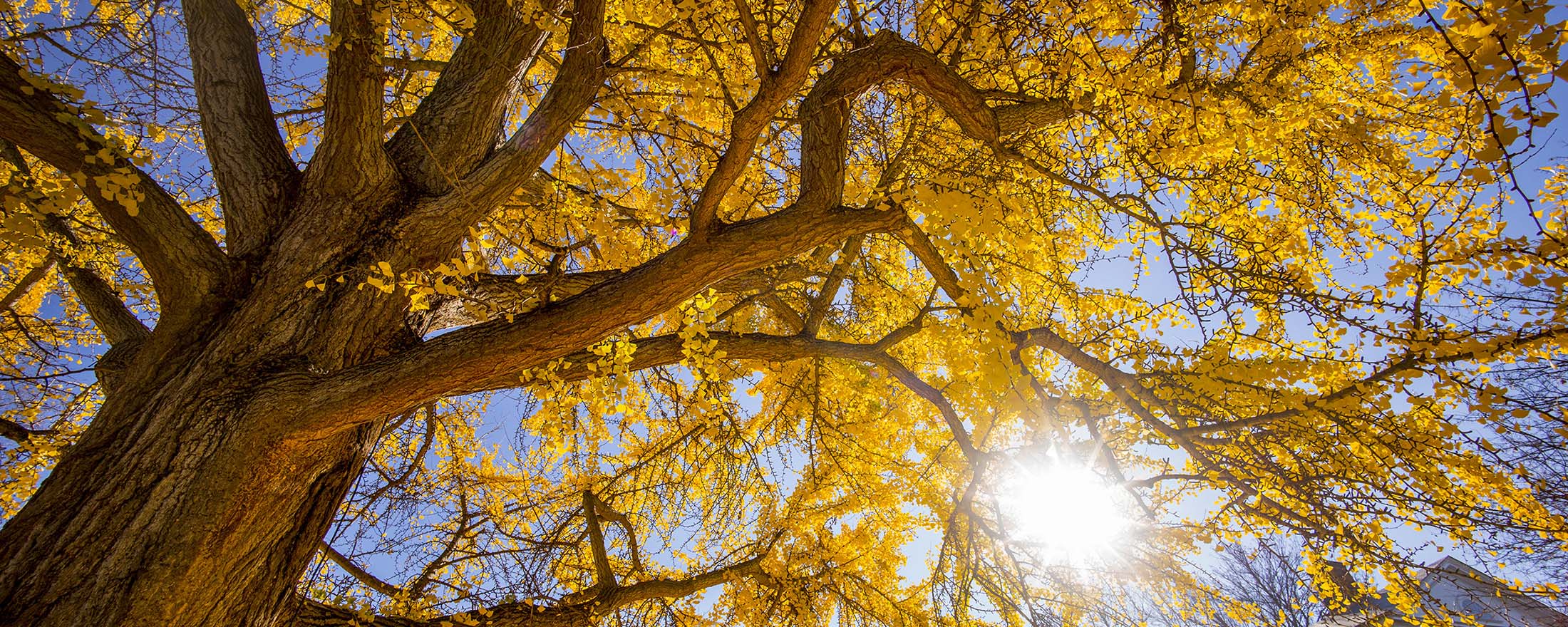Beloved by generations of University of Virginia students, faculty and staff, the Pratt Ginkgo, a ginkgo biloba tree on the northwest side of the Rotunda, provides shade in the summer, a spectacularly colorful canopy in the fall, and then drops its leaves for a brilliant golden carpet.
The tree was planted in 1860 and named for William A. Pratt, a well-known Richmond civil engineer who moved to Charlottesville in 1856. He developed a plan for the improvement of the Grounds and spent 1857 through 1859 constructing and renovating many buildings. In 1858, the Board of Visitors named him the University’s first superintendent of buildings and grounds. He is credited with planting many of the older maple and ash trees on the Lawn.
Ginkgo trees are among the world’s oldest species, having been around for about 200 million years, and it was one of five dominant species of trees in North America about 150 million years ago. But it disappeared from the North American fossil record about 7 million years ago, after a time of climate cooling.
Modern humans found the tree in China and it was mentioned in 800-year-old records of trade between Japan and Korea. The Dutch introduced the tree to continental Europe in 1727, and a botanist named William Hamilton reintroduced the trees to North America in 1784, planting two near Philadelphia.
Both of these trees are now gone; the oldest living ginkgo tree in the U.S. was planted in 1785 or shortly thereafter by the Bartram brothers, also near Philadelphia. Reliable sources say the oldest ginkgoes in the world are around 1,200 years old.
UVA’s majestic Pratt Ginkgo, with a diameter of 59 inches, is healthy, requiring no special treatments. University landscapers have outfitted the tree with a lightning rod that would disperse any electrical strike and save the tree.
The Pratt Ginkgo also has a metal horse hitch in its side. Richard Hopkins, the University’s landscape superintendent, said the tree has grown around the hitch, a wrought iron ring connected to an anchor bolt. At this point, removing it could create more damage than allowing it to remain.
The Pratt Ginkgo is a male tree. Female ginkgoes – such as the one on the north side of Brooks Hall – produce seeds that have a distinctive odor.
Here's a look at the tree's evolution in the fall of 2015, as captured by University of Virginia photographer Sanjay Suchak.
Media Contact
Article Information
December 17, 2015
/content/tree-see-history-behind-pratt-ginkgo

